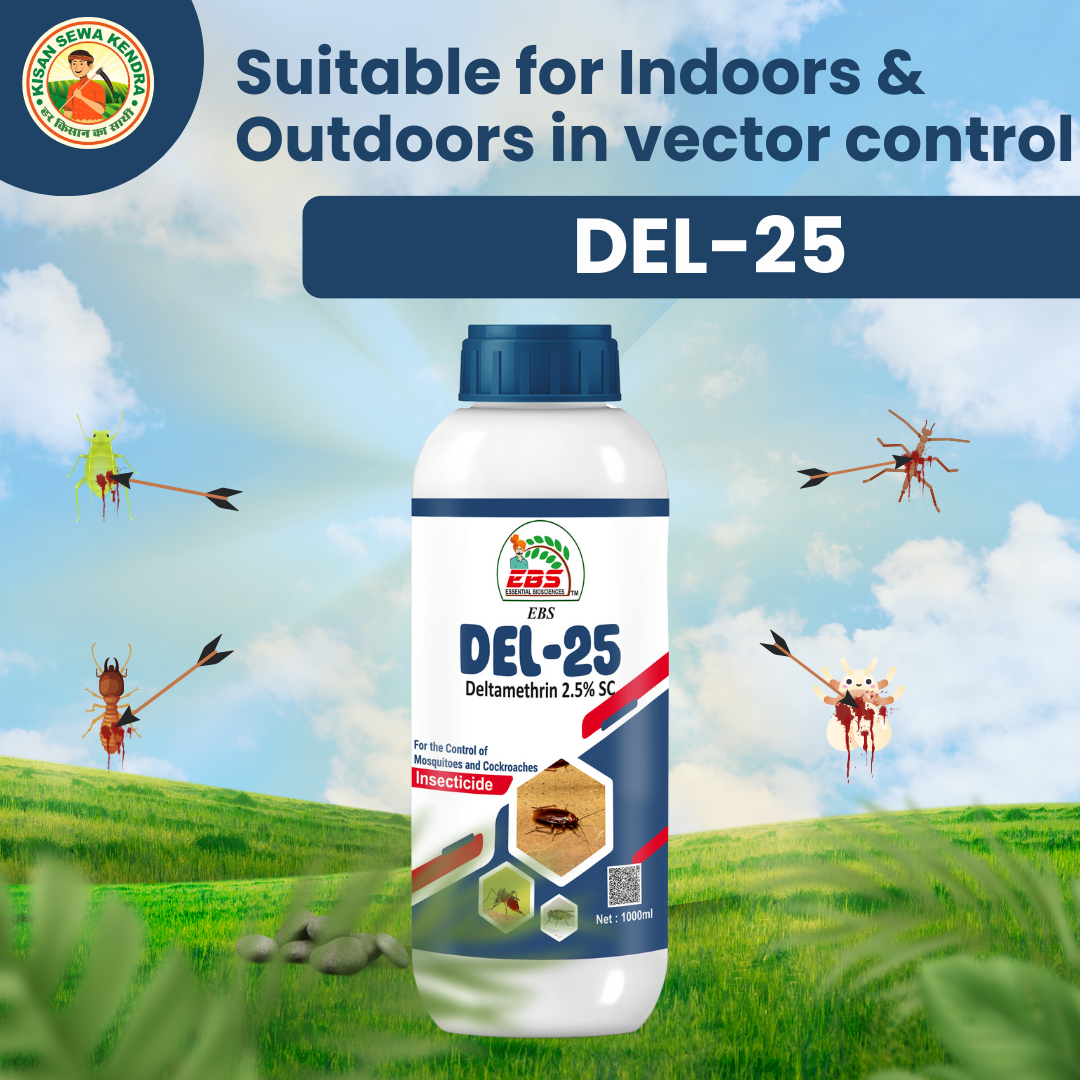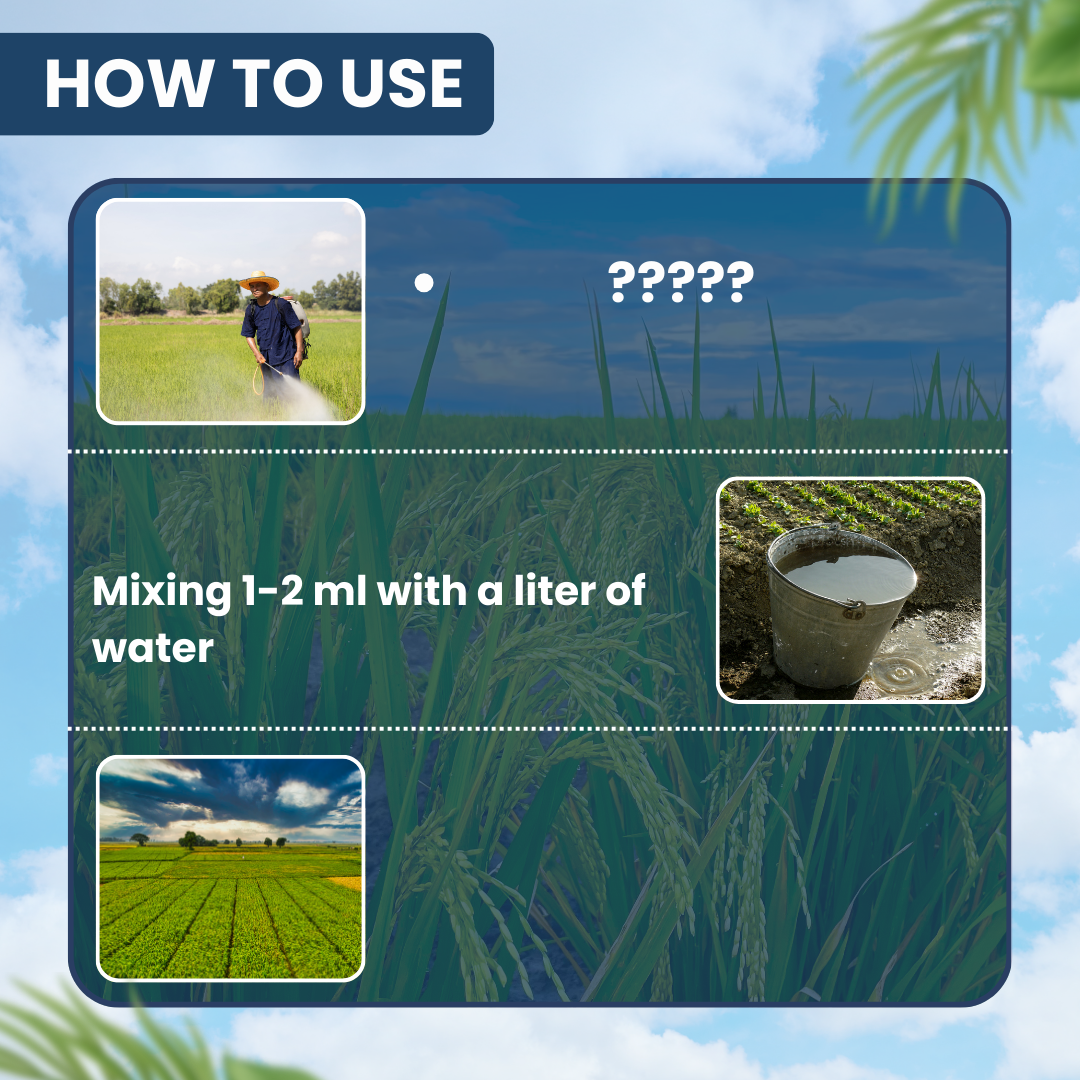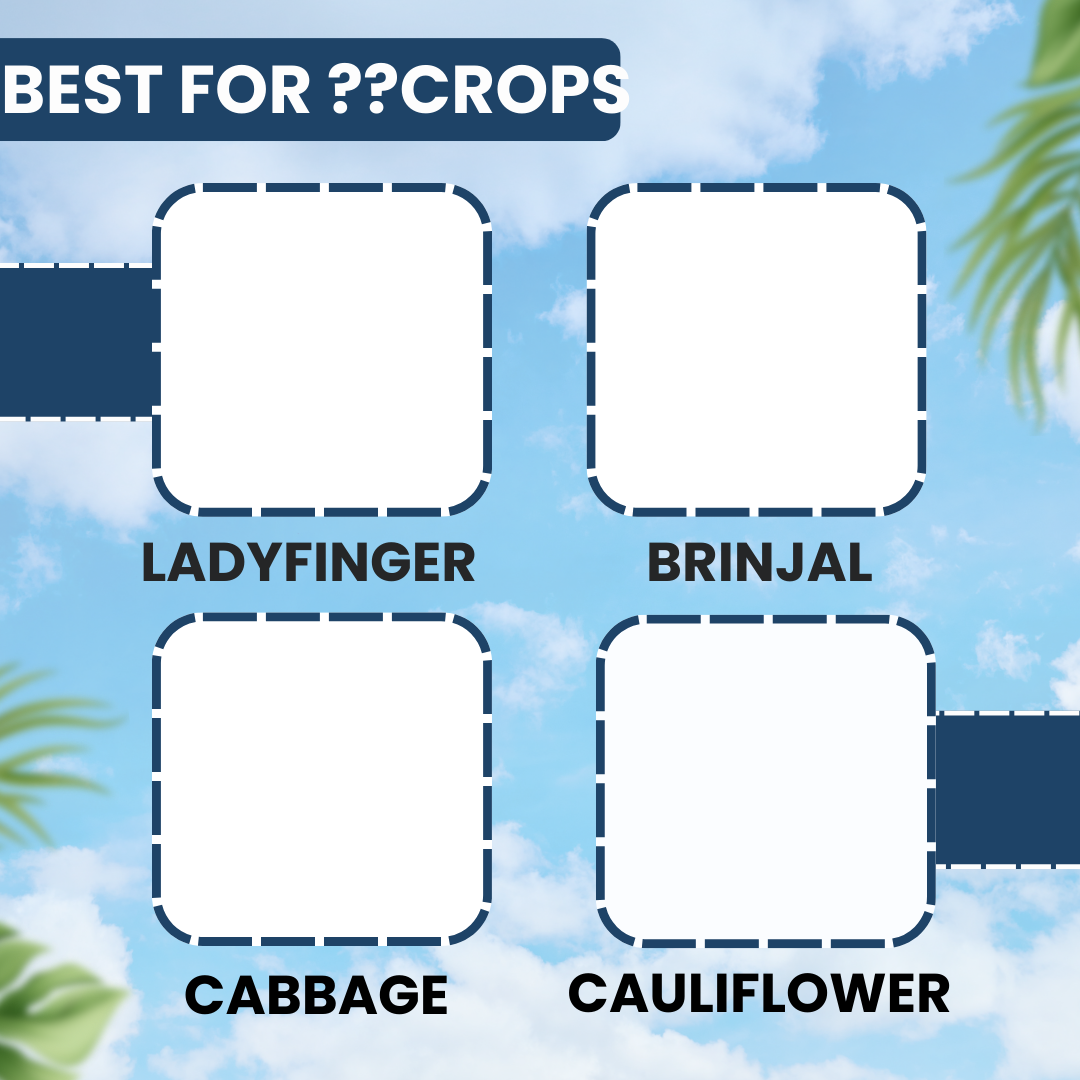
ESSENTIAL BIOSCIENCES
EBS DELTOS-25 Deltamethrin 2.5% SC
EBS DELTOS-25 Deltamethrin 2.5% SC
Couldn't load pickup availability
- Whatsapp or call for bulk orders: 9399022060
- Cash on Delivery Available for All customers in India
- Free Agri Expert Service Available
EBS DELTOS-25 Deltamethrin 2.5% SC
1. Product Overview:
Deltamethrin 2.5% SC (Suspension Concentrate) is a broad-spectrum, contact, and stomach insecticide belonging to the pyrethroid group. It is highly effective against sucking and chewing insect pests in various crops. Known for its quick knockdown and residual action, Deltamethrin works by paralyzing and killing pests on contact and ingestion. The SC formulation offers enhanced adhesion and longer-lasting protection, making it effective even under challenging environmental conditions. It is widely used in agriculture, horticulture, and public health programs.
2. Mode of Action:
Deltamethrin acts through a contact and stomach mechanism:
-
Nerve toxin: It disrupts the normal functioning of the nervous system by affecting the sodium ion channels of insect neurons.
-
Paralysis and death: By prolonging the opening of sodium channels, it causes continuous nerve impulses, leading to paralysis and death of the target pests.
-
Knockdown effect: Provides a quick knockdown within minutes of application.
-
Residual activity: Offers long-lasting protection by forming a residual layer on the plant surface, killing pests that come into contact later.
3. Target Pests:
Deltamethrin 2.5% SC effectively controls a wide range of sucking and chewing insect pests, including:
-
Aphids (Aphididae)
-
Whiteflies (Bemisia tabaci)
-
Jassids (Cicadellidae)
-
Thrips (Thripidae)
-
Leafhoppers
-
Bollworms (Helicoverpa armigera)
-
Diamondback moth (Plutella xylostella)
-
Spodoptera caterpillars
-
Stem borers (Scirpophaga incertulas)
-
Fruit borers (Leucinodes orbonalis)
-
Leaf-eating caterpillars
-
Mosquito larvae (in public health applications)
4. Crops:
Deltamethrin 2.5% SC is widely used on various crops, including:
-
Cotton: Controls bollworms, aphids, jassids, and whiteflies.
-
Rice: Protects against stem borers and leaf folders.
-
Vegetables (Tomato, Brinjal, Cabbage, Cauliflower): Controls fruit borers, diamondback moths, and aphids.
-
Pulses (Chickpea, Pigeon pea): Manages pod borers and sucking pests.
-
Fruits (Mango, Citrus, Grapes): Effective against fruit borers and aphids.
-
Sugarcane: Protects against early shoot borers and top borers.
-
Oilseeds (Groundnut, Sunflower): Controls thrips and jassids.
-
Ornamental plants and flowers: Used for aphid and caterpillar control.
-
Public health applications: Controls mosquito larvae and flies.
5. Application and Dosage:
-
Foliar Spray:
-
Cotton, rice, and vegetables: 0.5–1.0 ml per liter of water.
-
Pulses, fruits, and oilseeds: 0.8–1.5 ml per liter of water.
-
Ornamental plants: 1.0 ml per liter of water.
-
-
Frequency: Apply at the first sign of pest infestation and repeat after 10–15 days if necessary.
-
Method:
-
Spray evenly on both sides of the leaves, ensuring thorough coverage.
-
-
Pre-Harvest Interval (PHI): 7–14 days, depending on the crop.
-
Recommended spray volume:
-
Field crops: 500–1000 liters of spray solution per hectare.
-
Orchards: 1000–1500 liters of spray solution per hectare.
-
6. Benefits:
-
Broad-spectrum insect control: Effective against a wide range of chewing and sucking pests.
-
Quick knockdown effect: Pests are paralyzed within minutes, reducing crop damage.
-
Residual activity: Provides long-lasting protection for 10–15 days.
-
Rainfastness: Remains effective even after rainfall due to its residual properties.
-
Improved crop health: Reduces pest pressure, promoting healthier plant growth and improved yields.
-
Compatible with IPM: Suitable for Integrated Pest Management (IPM) programs when rotated with other insecticides.
-
Reduced resistance risk: Its contact and stomach action make it effective against resistant insect populations.
-
Environmental stability: Remains stable under sunlight and humid conditions.
7. Precautions and Safety:
-
Use protective gear (gloves, mask, and goggles) during handling and application.
-
Avoid spraying during flowering stages to protect pollinators.
-
Do not apply near water bodies, as Deltamethrin is toxic to aquatic organisms.
-
Follow the recommended pre-harvest interval (PHI) to avoid residue issues.
-
Store in a cool, dry place away from food, feed, and water sources.
-
Keep out of reach of children, pets, and livestock.
-
Dispose of empty containers responsibly.
8. Environmental Impact:
-
Toxicity: Highly toxic to bees, fish, and aquatic organisms.
-
Persistence: Deltamethrin has moderate persistence in soil but degrades relatively quickly in sunlight.
-
Pollinator safety: To protect bees, avoid spraying during bloom periods.
-
Low leaching potential: Minimal risk of groundwater contamination when applied correctly.
✅ Conclusion:
Deltamethrin 2.5% SC is a powerful broad-spectrum pyrethroid insecticide that provides fast knockdown and long-lasting residual control against a variety of chewing and sucking insect pests. Its contact and stomach action, combined with its rainfastness and stability, makes it a reliable solution for pest management in agriculture and horticulture. When used responsibly, Deltamethrin helps improve crop health, increase yields, and enhance agricultural productivity.




This products has very good result.
It's a great product.
Awesome Products with best prices
Best quality I have received from this.




